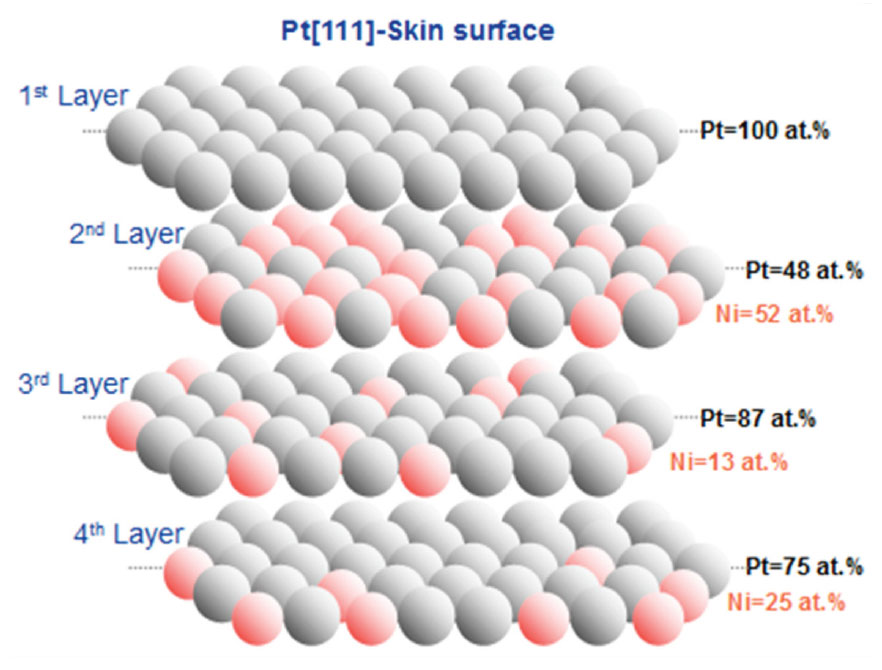The Invention
Scientists at Argonne National Laboratory have developed a method for creating a new class of platinum multi-metallic catalysts that are not only compositionally stable but also exhibit an advantageous electronic structure with enhanced catalytic properties.
Using this process, researchers created an alloy of platinum and one or more transition metals (such as cobalt, nickel, iron, titanium, chromium and others). Next, they modified the near surface layers by annealing, which induces formations known as nanosegregated surfaces. These surfaces vastly improve performance by overcoming kinetic limitations for the oxygen reduction reaction. The result is a catalyst particularly advantageous for use in polymer electrolyte fuel cells.
In the energy industry, fuel cells are rapidly becoming an important component. However, the high cost of manufacturing the platinum catalyst—a required element in a fuel cell—makes fuel cells relatively non-competitive in the commercial world. So far, such catalysts have not been able to demonstrate the performance and life expectancy consistent with a fuel cell’s long-term operation. Argonne’s invention overcomes this limitation.
Benefits
- Enhanced catalytic properties that drive improved performance,
- Greater stability
- Greater cost-effectiveness
Applications and Industries
- Polymer electrolyte membrane fuel cells
- Energy storage devices, such as metal-air batteries
- Magnetic storage devices
- Automotive industry
Developmental Stage
Proof of concept

